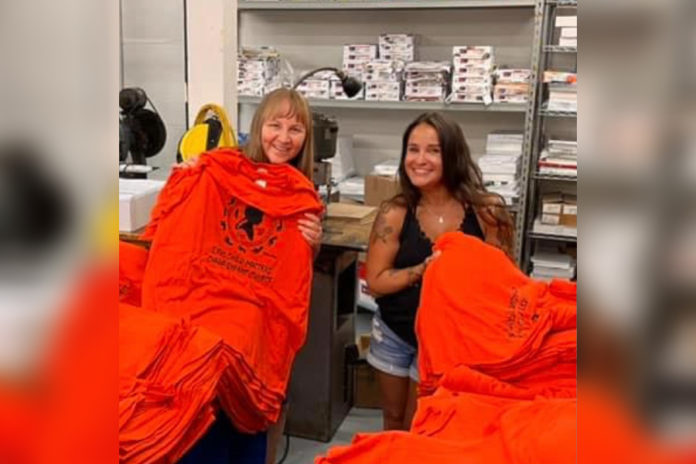Mi’kmaw artist and University of New Brunswick alumni Robin Paul created her popular orange t-shirt design to represent Indigenous communities in New Brunswick and to start a conversation about truth and reconciliation education.
The shirts will be worn across the country on the National Day for Truth and Reconciliation on Sept. 30.
“That was quite a huge honour. I didn’t expect it to be as big as it got and I wasn’t expecting that at all,” said Paul.
Paul was contacted earlier this year by Mayday Print and Swagshop to design the shirts. She had about three weeks to come up with the potential designs.
Paul said she used her family as a sounding board to hear different perspectives and because she enjoys when her kids are part of the artwork.
“[I]really wanted to highlight a child silhouette, so it’s unisex,” said Paul.
Paul modelled the silhouette after her middle child — a boy with long hair.
Three symbols surround the child: a feather represents First Nations communities, an eternity symbol represents Métis communities, and an inukshuk represents Inuit communities — a ring of sweetgrass circles these symbols. It is a sacred medicine, which Paul says she added “as a symbol of healing.”
A heart sits at the top of the design. It is important to Paul because it pays homage to her friend, who showed resilience while she underwent chemotherapy. Her friend taught fellow chemo patients artwork as a way to heal.
“She’s always been a push for me,” said Paul, adding that it was this same friend who urged her to attend UNB, where she studied Indigenous education.
“She’s helped me heal because, when she was in chemo, a way for her to heal herself [was] she actually taught other patients that were going through chemo … artwork.”
Paul feels there is a missed opportunity to use Sept. 30 as a teaching tool, as she believes people, and especially younger children, can always ask more questions. In her experience with young kids in the school system, the topic is “a box that you check.”
“They aren’t really taking it as a teaching tool,” said Paul. “It’s literally a box that you check. ‘Yeah, we talked about truth and reconciliation and then we moved on.’”
Tanner Augustine, a third-year student at St. Thomas University, said he likes Paul’s design, noting how it represents many different Indigenous groups and highlights the importance of hearing diverse voices.
Augustine would like to see Canada accept its history in full.
“[People] tend to leave out details of how Indigenous people suffered for events such as the [building of] the Trans-Canada Railway and residential schools,” he said.
For National Truth and Reconciliation Day, Augustine hopes that people take the time to learn more about these subjects instead of treating it as “just another day.”
“A lot of this trauma and damage still survives to this day.”

